On the campus of the Guangzhou Institute of Geochemistry (GIG) of the Chinese Academy of Sciences (CAS), an elderly man is often seen: he is of average build, with black-rimmed glasses on his round face, a checked shirt neatly tucked into his jeans, and a black backpack over his shoulders, his stride firm and steady – all this reveals a refined and precise scholar.
He is Eiichi Takahashi, a world-renowned experimental petrologist from Japan who has made significant contributions to research on magma genesis, mantle plumes, and high-pressure phase diagrams.
Four years ago, after retiring from the Tokyo Institute of Technology (Tokyo Tech), he lost no time in moving to China to take up his new position as a full-time research professor at GIG. To carry on with his beloved research in Guangzhou, a city in southern China, is in his own words “my best retired life”.
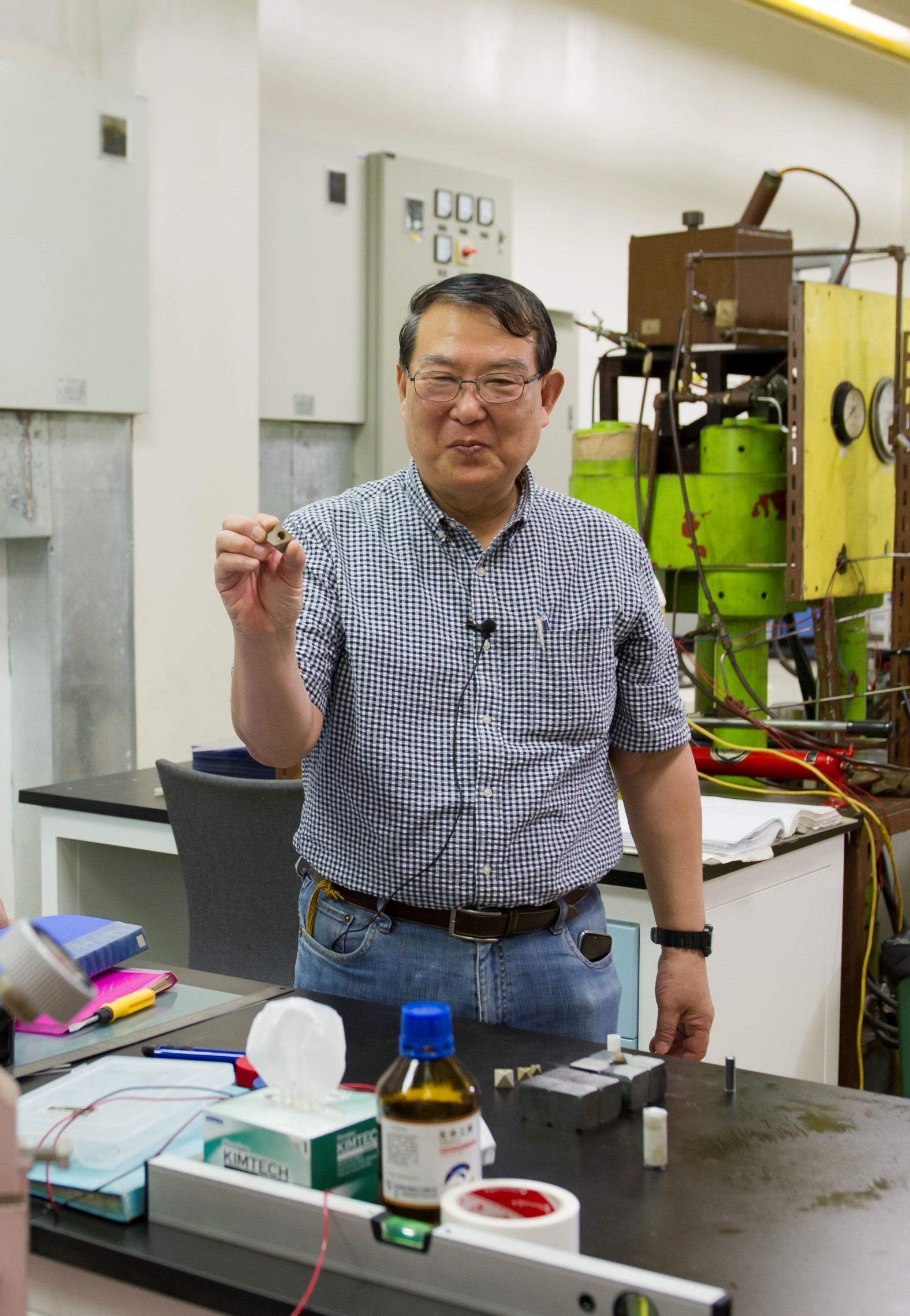
Takahashi shows in his hand the high-pressure assembly: MgO octahedral pressure medium.
Lifelong Pursuit of a Teenage Dream
Eiichi Takahashi was born in Hamamatsu city, Japan in 1951. His passion for science can be traced back to his teenage years. When he was a junior high school kid, a teacher whom he was greatly indebted to inspired him: one should take seeking truth, rather than chasing after fame and wealth, as the ultimate purpose of life.
It was from there that his science dream took flight. Particularly mesmerized by rocks and volcanos, he, as a high school student, once wrote a letter to Hisashi Kuno, a well-known professor in petrology at the Tokyo University who he had never met. In the letter he raised seven questions about one of the professor’s studies.
“Quite surprisingly, he wrote me back!” Relating this anecdote, Takahashi, now almost 70 years old, is still visibly excited, not to say how ecstatic he was then. He had worked very hard ever since, determined to get into the Tokyo University to study earth science.
At last, the teenager’s dream came true. Takahashi went straight from his bachelor’s degree to PhD at the Tokyo University. After graduation, he went to the US to undertake postdoctoral research at the Carnegie Institute of Washington.
Later he came back to Japan and taught at the Okayama University and then Tokyo Tech, where he was one of the starting members of the Department of Earth and Planetary Sciences.
He has devoted his life to the research on mantle rocks and volcanic rocks by integrating indoor high-temperature and high-pressure experiments and the study of rock samples collected in the field, with the aim to explain magma genesis and ultimately understand how earth was formed in the first place and developed through time.
Throughout his career spanning over 40 years, what Takahashi most takes pride in is several groundbreaking achievements mostly made in the 1980s. In the early ‘80s, he and his supervisor Prof. Ikuo Kushiro determined for the first time the depth of where a variety of basaltic magma originates by conducting experiments that simulated the melting process of mantle peridotite 30 to 90 km deep in the Earth.
In the following years, Takahashi increased the pressure of his melting experiments considerably to 25 GPa, equivalent to the pressure 720 km deep in the Earth. In this way he investigated the possible chemical composition of the magma ocean which might have covered the Earth 4.5 Ga years ago, which opened a window into the study of the Earth’s magma ocean from the perspective of petrology and geochemistry.
Throughout the ‘80s, by using self-developed multi-anvil apparatus, Prof. Eiji Ito and Takahashi worked together to determine the nature of the 660-km-depth boundary which separates the upper and lower mantle.
Takahashi also utilized high-pressure experiments to study the origin of voluminous magma in the mantle plumes such as those in Hawaii and Columbia River flood basalt.
His research outcomes have been published in some of the world’s top research journals, such as Nature, Science, Journal of Geophysical Research, Earth and Planetary Science Letters, and American Mineralogist, and the papers have enjoyed numerous citations and guided the research development in several fields.
With his remarkable achievements, Takahashi won many international awards. At 36, he got the F.W. Clarke Award, which is presented by the Geochemical Society to honor a single outstanding contribution to geochemistry or cosmochemistry by an early-career scientist, with only one awardee each year.
At 65, he was elected AGU (American Geophysical Union) Fellow. Founded in 1919, AGU is one of the world’s most influential academic organizations in earth sciences. Starting from 1962 it elects Fellows among all its members annually to honor their pioneering research work, with the selection ratio smaller than 1 to 1000.
For Takahashi, science is his job, but more importantly his No. 1 hobby, even before classical music and fine art. He emphasizes more than once that in doing science what comes first should be curiosity – that is the pure desire to explore the unknown.
Only when one sees science in an artistic view can he enjoy it, and as a result he is more likely to achieve something big – this, he says, is the key to success for many great scientists, as well as the most important piece of advice he wants to share with young researchers. He also says that the best part of science is making friends with people from all over the world through connection in work. In regard to this, he specifically quotes “Is it not a delight to have friends coming from afar?”, a famous sentence from the Chinese classic Lunyu, or The Analects of Confucius.
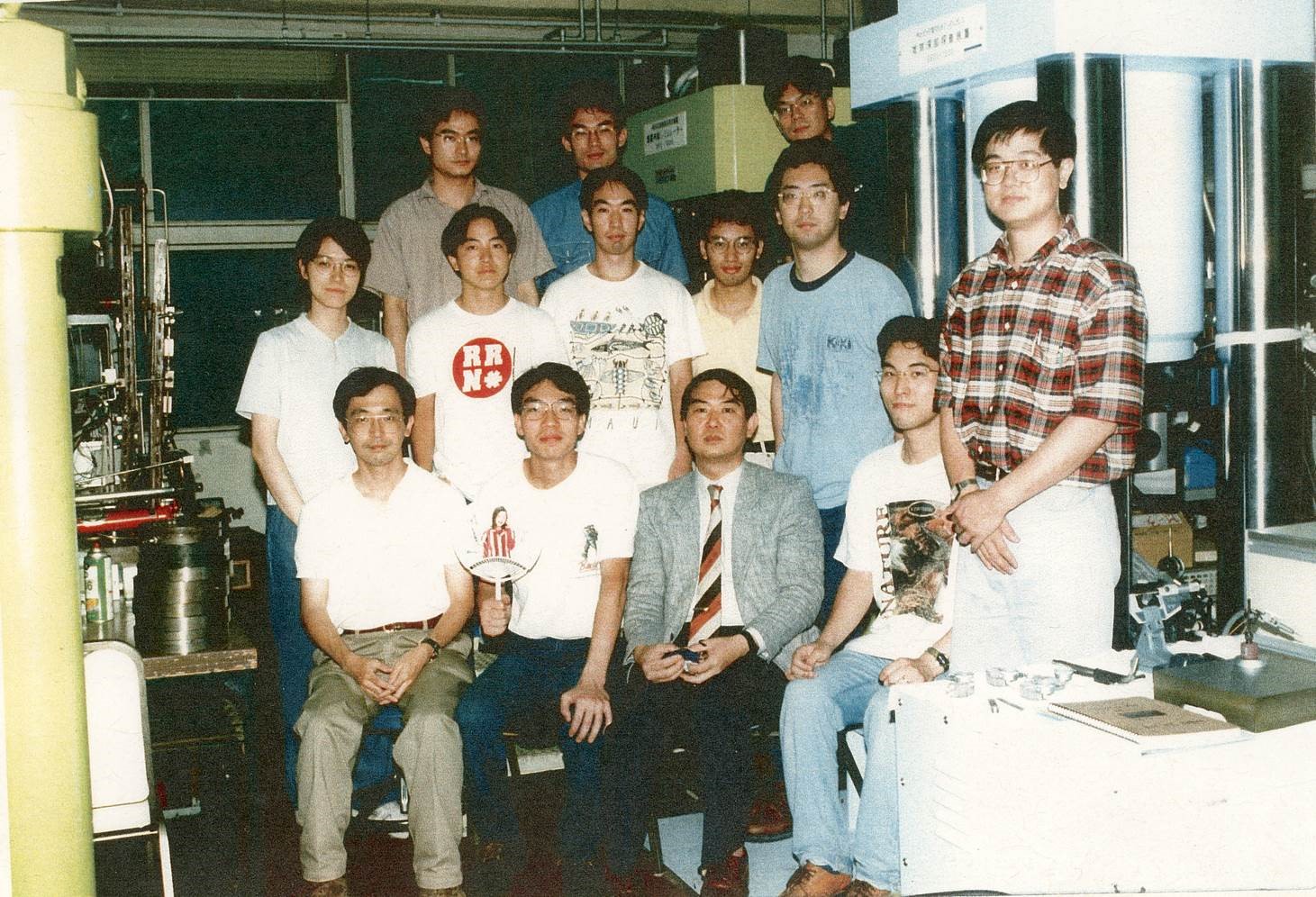
Takahashi (front row, third from the left) builds his research team and laboratory at Tokyo Tech.
With love and passion, even hardships became tolerable. In 2009, he fell off a seaside cliff by accident when gathering samples on Japan’s Miyakejima Island. As he was burdened with heavy collected rocks, one of his feet hit the hard lava rock violently, resulting in an instantly broken ankle. Fortunately he survived thanks to the timely boat rescue.
This accident condemned him to two months in hospital, three months in a wheelchair, and one year with walking sticks. But even when he was in hospital, he asked his students to visit him for weekly seminars and discussion on research progress.
While telling these stories of hardship and danger in scientific exploration, he keeps his usual smile on his face.
As a matter of fact, in everyday conversation he is always radiating cheerfulness and enthusiasm that are more commonly seen in the young – that is a reflection of his optimistic nature and single-minded pursuit.
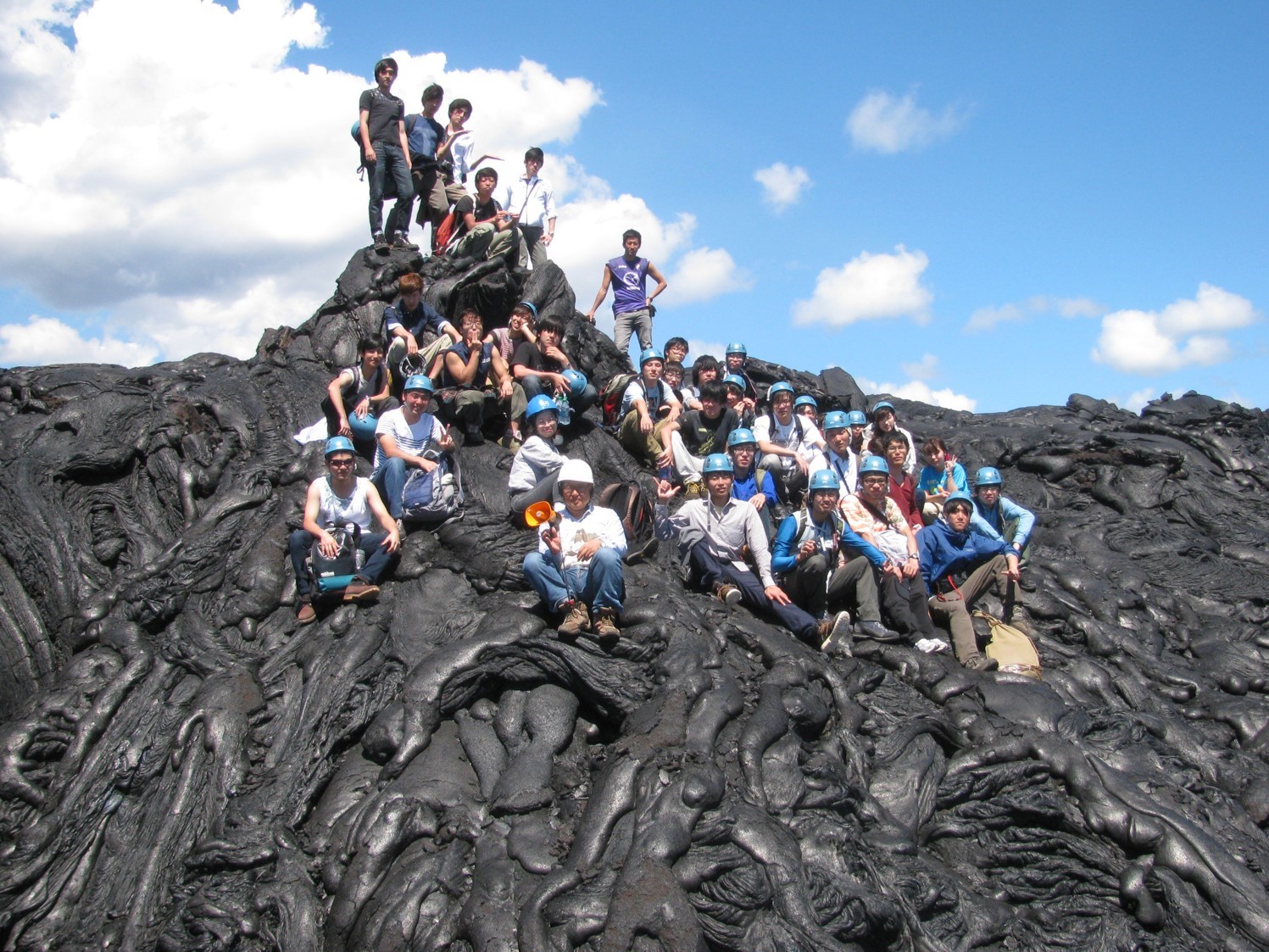
Takahashi (the one holding an orange loudspeaker at the center in the front row) takes undergraduates on a field trip to Hawaii for investigating lava.
Contributing to Others’ Success, from Japan to China
In 2017, Takahashi, then 65, retired from Tokyo Tech, with which he had nearly 30 years of service, and came to work at GIG with the support from the CAS President’s International Fellowship Initiative (PIFI), which is a funding scheme of CAS that enables foreign professionals at different stages of their career to visit or work at CAS institutes with flexible options of duration, with the aim to further internationalize CAS’ brainpower and solicit the wisdom of scientists globally.
So far PIFI has granted funding to Takahashi for three times in a row, which has helped to ensure the success of his scientific work in China.
So what made him choose to keep himself busy in a foreign land when he could have enjoyed an easy life in his late years? His answer is simple: “Why don’t you if you have a chance to do your hobby?”
In fact, Takahashi’s personal contact with China began more than two decades ago, when he took his first Chinese postdoc WANG Wuyi, who later became Vice President of Research & Development, New York at the Gemological Institute of America (GIA).
At the invitation of WANG, Takahashi traveled to China for the first time in 2000 to visit the China University of Geosciences, Beijing, and the Nanjing University. Takahashi’s second student from China was REN Zhongyuan, who as a PhD student then took part in a Japan-US joint research project on Hawaiian volcanos from deep underwater perspectives and produced fruitful results.
In 2007 Ren returned to China and has worked as a research professor at GIG ever since. Interestingly, the last PhD student of Takahashi was from China too. The high caliber of these Chinese young researchers made a deep impression on him.
During the last few years before retirement, he hosted several scientists and students from GIG who performed experiments in his laboratory and later helped to move the laboratory to China.
What led to Takahashi’s final decision to take up employment with GIG was the invitation from Prof. XU Yigang, CAS Member and former director of the institute. They had been friends even before that as they shared common research interest in magma genesis in mantle plumes and came across each other from time to time at international symposiums. In view of GIG’s pure research environment and high research levels, Takahashi accepted the job offer delightedly.
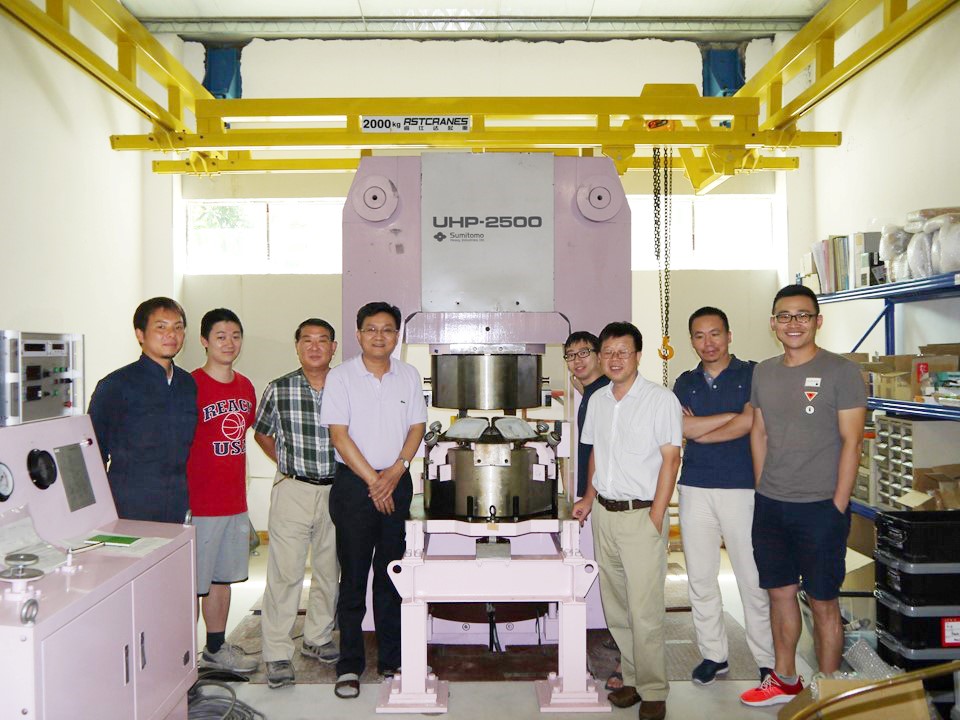
Takahashi finds a home for his multi-anvil press “Sakura” at GIG (Prof. Yigang Xu, fourth from the left).
As one of the frontiers in earth sciences, high-pressure experiment simulation, which Takahashi specializes in, is an important approach to studying deep earth processes, and deep earth research is crucial to understanding how the Earth developed into a habitable planet. Therefore, the study of high-pressure experiments is extremely important to GIG, which is reorganizing its state key laboratories for deep earth research.
As China is still lagging behind in terms of high-pressure experiments, the advent of a top scientist like Takahashi will be far-reaching, not only for GIG’s development in the long run but also for the country’s endeavors to catch up.
Specialized instruments are indispensable to high-pressure experiments. It took Takahashi two years to move almost half of his laboratory in Japan to GIG. All the equipment was donated by Tokyo Tech based on a collaboration agreement with GIG, including a piece of multi-anvil apparatus weighing more than 20 tons with a manufacturing cost of about 7 million Chinese yuan.
When asked what he expects to achieve in China, Takahashi replies, “I am a pretty old person now. So I myself am not eager to achieve my own success. But if I can contribute to other people at GIG or other places in China, I am very happy.”
As he explains, he is now working hard as an engineer at GIG to facilitate his colleagues’ research. He is leading LI Li, an engineer, in improving pressure calibration of the multi-anvil high pressure apparatus, as accuracy of pressure values is vital to high-pressure experiments.
He is also collaborating with professors like XIONG Xiaolin, SONG Maoshuang and LIU Xingcheng on many research projects utilizing the multi-anvil press. In addition, he is working with the postdoc Yuto Sato and Prof. XIA Xiaoping in an effort to set up the first standard system in China for analysis and measurement of water in minerals, so that it can be applied to the study of magma genesis and Earth dynamics, including explaining the mechanism of the big mantle wedge in East Asia as well as the magma genesis of the Emeishan and Hainan basalts.
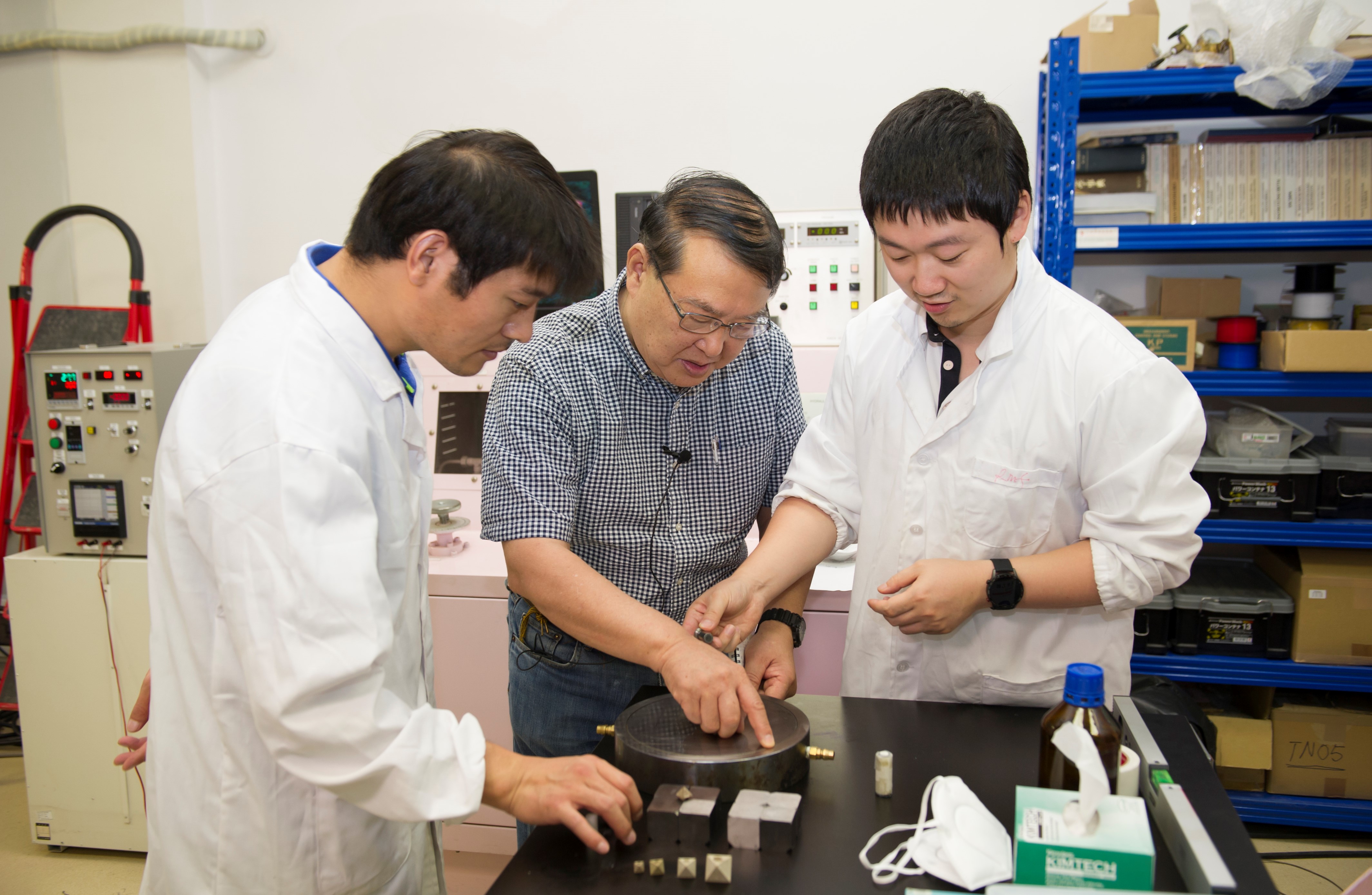
Takahashi performs routine maintenance of high-pressure apparatus with his colleagues.
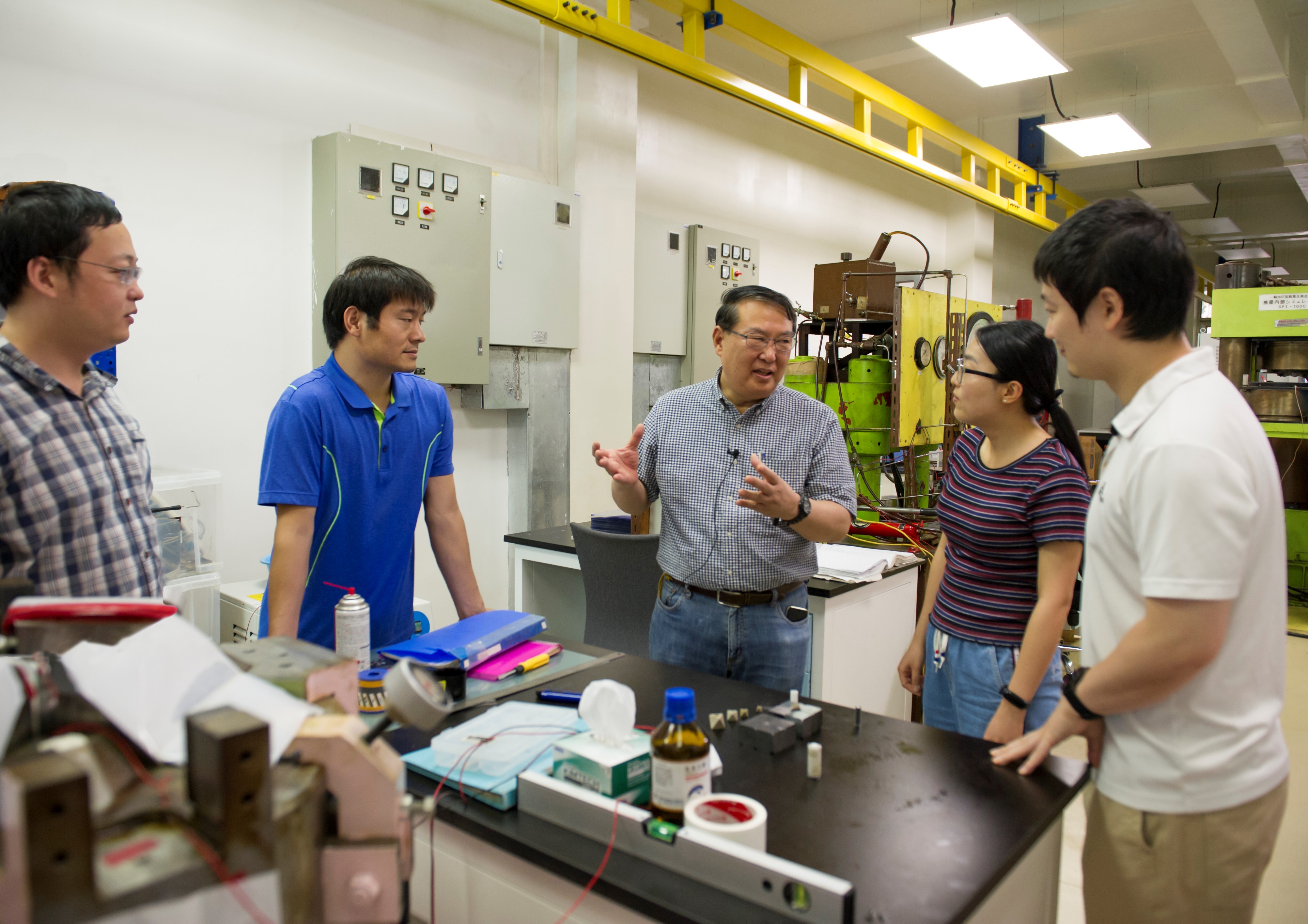
Takahashi gives guidance to young scientists at GIG.
Apart from providing technical assistance to scientists as an engineer, Takahashi would also like to continue working on the issue he has been studying all his life: magma genesis of Hawaiian volcanos. Here his dual role is worth mentioning: he is an engineer that develops and manages instruments, and at the same time a scientist that does research with the help of instruments – taking care of both the technology side and the research side as such is common in Japan’s scientific world, actually a widely accepted practice.
To illustrate this, Takahashi makes a comparison with classical music, of which he is a fan: if a composer can play the piano as brilliantly as Beethoven did, he is more likely to create a great sonata; in a similar vein, if a scientist knows everything about a piece of equipment, he can develop or modify it by himself to enable it to better serve the needs of his own research.
Takahashi has not only brought advanced laboratory apparatus and technology, but also introduced two excellent Japanese scientists, Prof. Akira Tsuchiyama and the postdoc Yuto Sato as mentioned above, to GIG, where they now work full-time.
Talent and Tenderness beyond Science
Besides research, Takahashi also engaged in administration with exceptional achievements. In 2002, the Japanese government set up the 21st Century COE (Center of Excellence) Program to introduce positive competition between universities in the country.
After failing in its first application for the Program in the year dedicated to the earth science category, Tokyo Tech appointed Takahashi as program leader at the second attempt. Under his leadership, the university’s application entitled “How to build habitable planets” came first among some 300 rivals nationwide across all categories of disciplines in the year when the Program application was open for the last time.
The university’s performance in conducting the Program afterwards was evaluated as excellent, which paved the way for the later establishment of the Earth-Life Science Institute (ELSI) at the university.
Takahashi also served as the university’s library director. During his tenure, the costs of the electronic accessibility of international research journals soared, and consequently many universities in Japan stopped buying the service.
However, keenly aware of the importance of e-journals to a research-focused university, Takahashi made great efforts both internally and externally: liaising with different departments within the university and visiting several universities in the US to discuss countermeasures.
In the end, he managed to maintain his university’s subscription of e-journals. Such is the man that “looks up at the sky while planting his feet on solid ground” – Prof. LIU Xingcheng provides a metaphorical description of Takahashi, his former teacher and current co-worker, who not only has lofty ideals in science, but is also experienced in the ways of the world and always ready to address practical issues.
It has impressed many colleagues that Prof. Takahashi finds something interesting in almost everything, often laughing with his head tilting back and eyes turning into crescents. When talking about cooking, one of his hobbies, he makes a funny joke by saying “Cooking is similar to experimental petrology. For cooking, you can choose your ‘starting materials’ and you can choose your heating temperature, spices, seasonings, etc.”
Takahashi is easygoing and prefers to do everything by himself, always in a meticulous manner. When he was still working in Japan, he offered to host a visit for a group of Chinese students, which was supported by the Sakura Science Exchange Program.
He himself led the 10-day trip throughout, and before that he personally took care of such basic matters as hotel booking and trial run of traveling routes.
Recently when he had to fill in an application form in Chinese by hand, despite a Chinese colleague’s repeated offer of help, he insisted on copying the Chinese characters by himself stroke by stroke. In spite of mistakes in the first few drafts, he did not stop until he got everything correct on a single sheet.
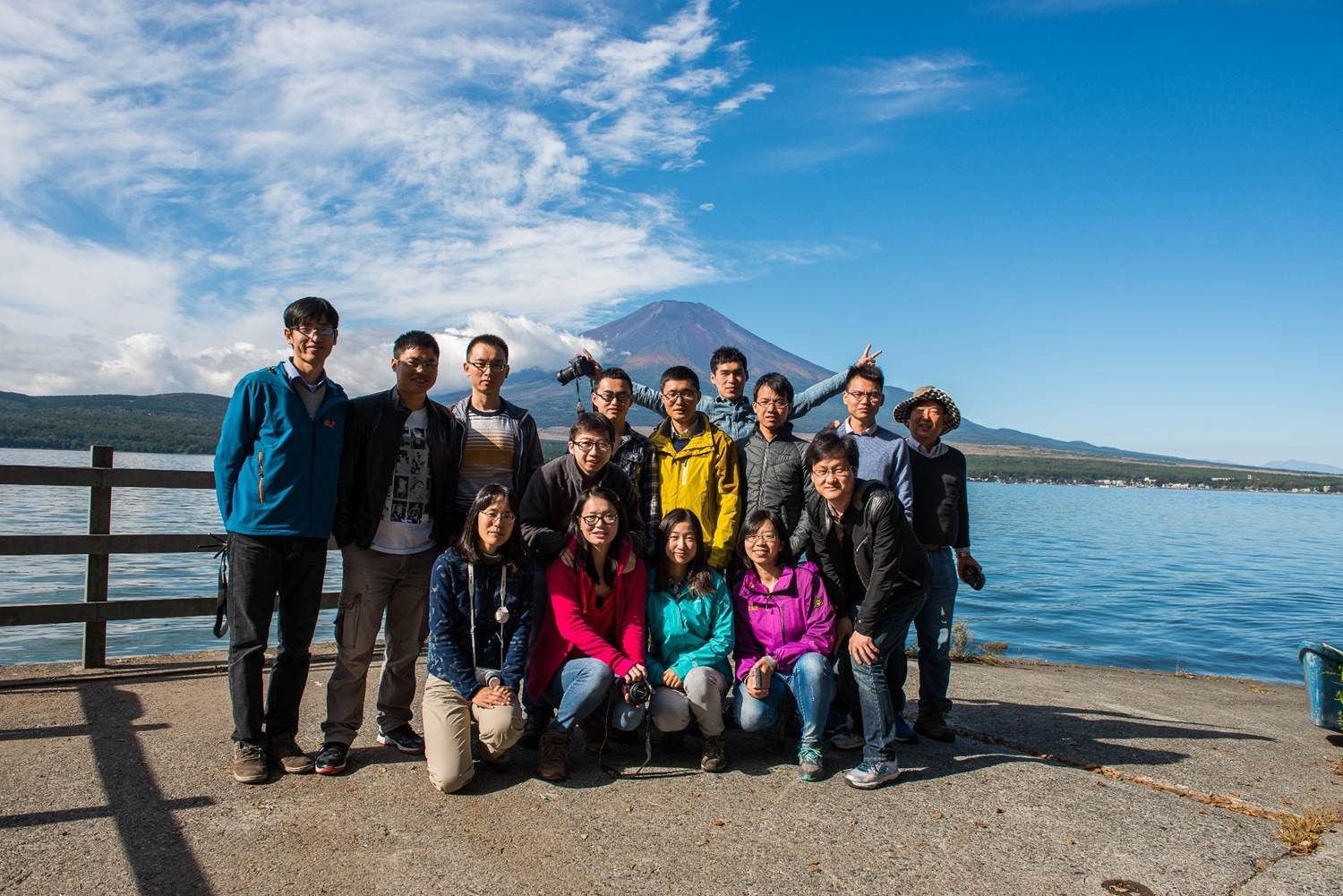
In 2015, Takahashi, then working at Tokyo Tech, hosts a visit funded by the Sakura Science Exchange Program for USTC students from China.
When he learnt that GIG would do an interview with him, he carefully prepared, without being asked to, dozens of PPT slides containing photos that he selected according to the question list, and even inserted notes in English.
On the first slide is a photo of him and his family during a hike in Mount Togasa on Japan’s Izu Peninsula, and a few Japanese words that combine to mean “Happy New Year” have been added to the photo in sort of a formal way. He has made it a rule to have a get-together with his children and grandchildren at the beginning of every year as well as every summer.
He says he was a workaholic as a young man, so much so that he stayed overnight in his office three days a week, which lasted for one year. However, as he approached middle age, something unexpected happened in his life and it suddenly dawned on him that instead of immersing himself entirely in his work, he should pay more attention to the people around him – his family, co-workers, and students.
Pointing at a photo taken at the party celebrating his retirement from Tokyo Tech, he tells us, “In this picture, there are five couples who are all former students of mine, with their children,” his voice tender.
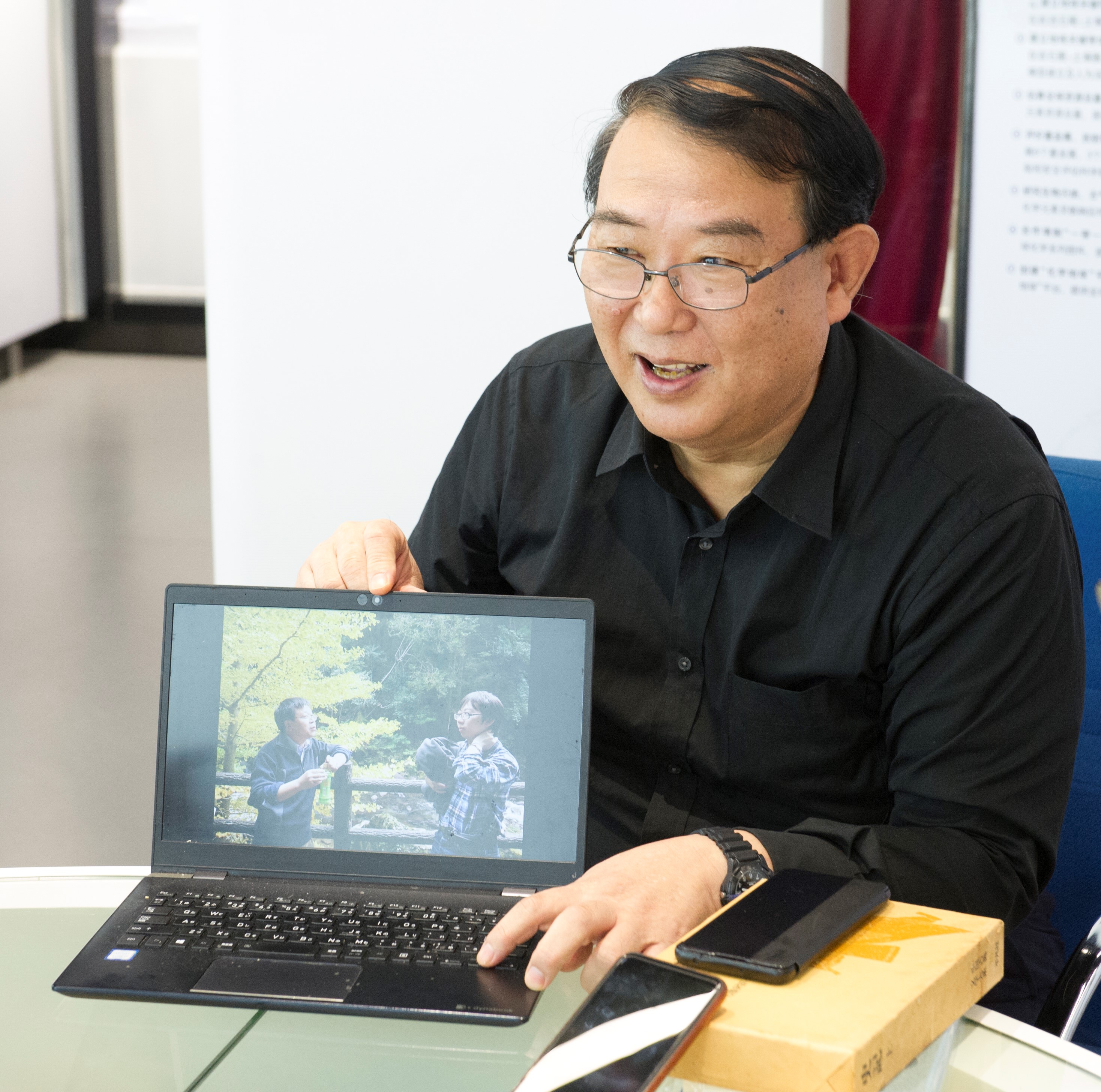
A photo he keeps shows his friendship with Chinese scientists.
This is Takahashi’s fourth year in China. Deeply interested in the country’s ancient history, he has with him a Japanese version of Shiji, or Records of the Grand Historian of China, and one of his recently planned travel destinations is Yinxu, the ruins of an old city in China some 3,300 years ago. He also enjoys Guangzhou’s inclusiveness and speaks highly of the local cuisine.
It is his wish to go on with his work here. He says he wants to bear witness to China’s development amid global transformations and continue helping Chinese young people scale new heights in science.
(Written by WU Manqing; planned and edited by ZHAI Xin and LIU Xingcheng; photos provided by Eiichi Takahashi and GAO Wei)